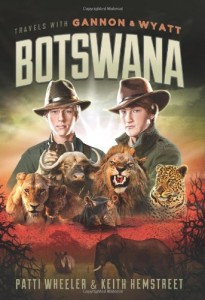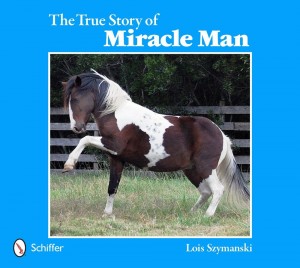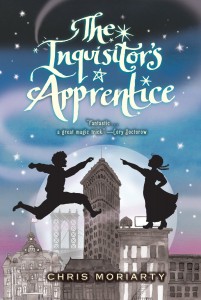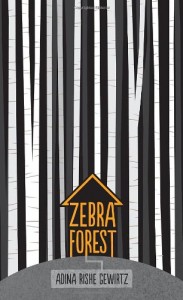Written by Patti Wheeler & Keith Hemstreet
The book provides enough detail about the animals, people, wildlife, and flora/fauna of Botswana to satisfy the most hungry travelers and wannabe adventurers. It is highly recommended for lovers of nature and geography who like a small dose of danger and excitement mixed into their discovery. Near the beginning, Wyatt and Gannon’s mother is nearly attacked by a Rhino protecting her babies. The middle of the book finds the twins accompanying an adventure guide and an elder bushman on a search for a lioness who’s been shot by a poacher. Along the way they encounter vultures, a sleepy croc, black mambas, a cobra, cape buffalo and the rest of the big five… all while battling fevers, lack of food (thanks to an opportunistic baboon) and unfavorable weather conditions. The pacing is good and there is enough going on to keep the most reluctant of readers turning the page.
Those seeking a solid story line with a plot arc and character development may be disappointed, however. Although Gannon and Wyatt are described as stereotypical opposites – Wyatt is an introvert with a love of science, while Gannon is much more outgoing and interested in people – it is often hard to tell, within the text, whose journal entry you are reading. The author guides us through this by identifying the writer at the start of each entry along with the date and a description of their location and the weather conditions (with Wyatt’s being more detailed than Gannon’s.) But the amount of information they provide and the advanced age at which they write is essentially the same. Apart from Gannon’s inconsistently casual voice and occasional use of slang, it is hard to image the astute observations and precious commentary on human nature coming from the journal of an average middle grader.
Gannon and Wyatt are real 15-year-olds, however, who liken their journals to the work of historic explorers such as Lewis and Clark, Dr. David Livingstone, and Captain James Cook. Based very loosely on the “research missions” of these home schooled teens (who visited Botswana along with mother and co-author, Patti Wheeler, and collaborated with Keith Hemstreet to create the adventure tales over fireside chats) the book definitely delivers on it’s promise to provide travelogue mixed with educational material that you can’t get in textbooks. It would work well as a classroom read aloud or book assignment in conjunction with a topic specific geography or social studies unit. Other destinations in the planned book series include Canada’s Great Bear Rainforest, Egypt, Greenland, and Iceland.
With book trailers and short “episodes” (http://www.youtube.com/user/gannonandwyatt), a blog of field notes on their website (http://www.travelswithgannonandwyatt.com/blog), plus an invitation for readers to join the Youth Exploration Society (YES) the authors have succeeded in providing something for every student – from those who crave information to those more interested in exploring the visual parts of Gannon and Wyatt’s travels. The reading activities teachers can apply to these books are endless, especially as the series continues to expand.
 Title: Travels with Gannon and Wyatt: BOTSWANA
Title: Travels with Gannon and Wyatt: BOTSWANA- Author: Patti Wheeler & Keith Hemstreet
- Publisher: Greenleaf Book Group Press
- Reviewer: Yolanda Ridge
- Book Length: 76 pages
- ISBN: 978-1-60832-585-6
- Genre: Nature, Adventure









